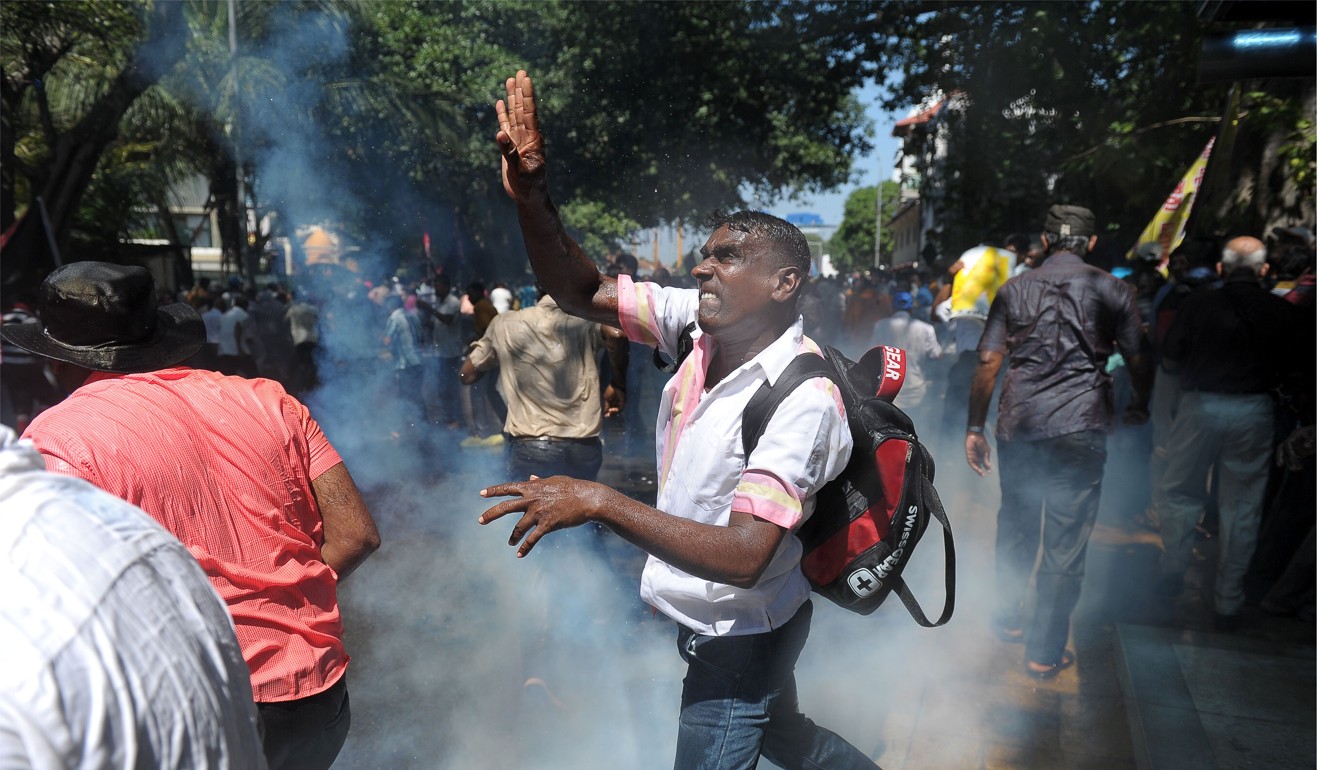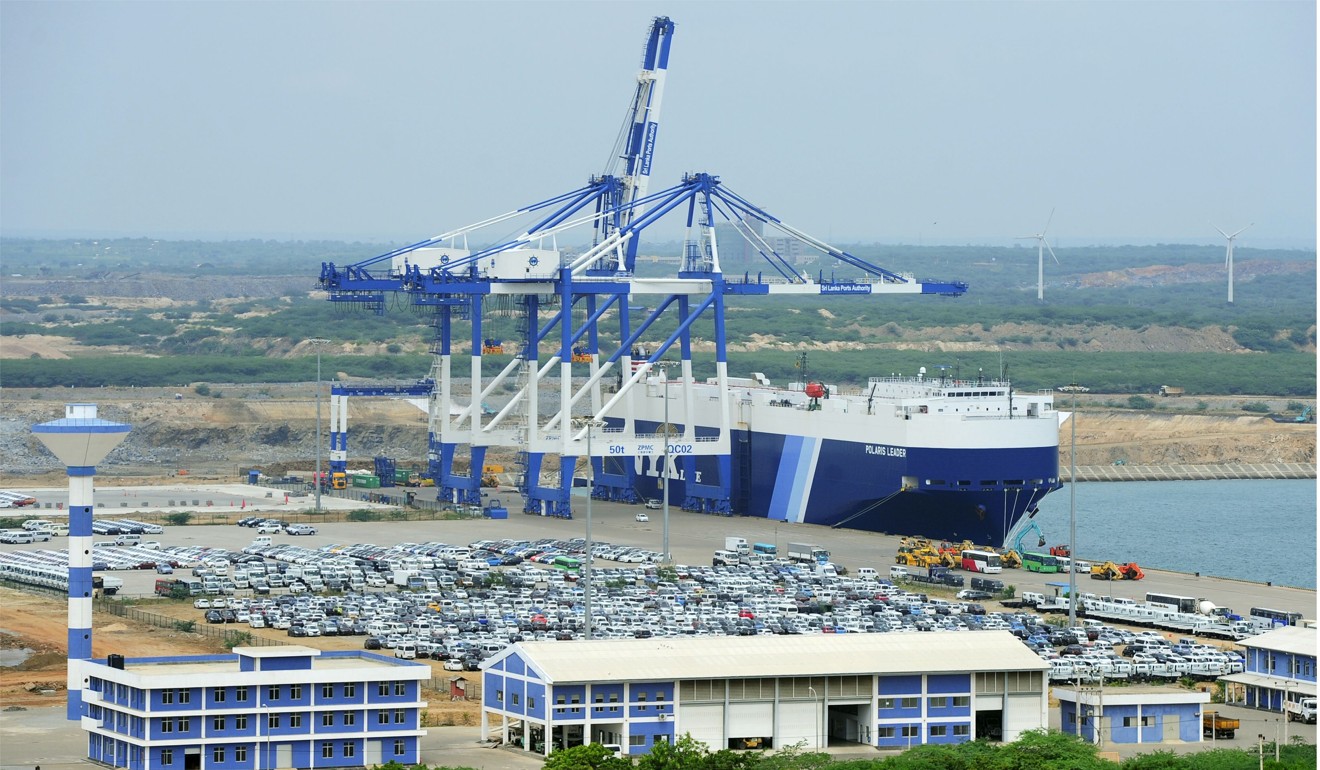
Japan takes the lead in countering China's Belt and Road Initiative
Tokyo is increasingly joining up with other countries, especially India, and boosting its military in the Indian Ocean area in an apparent bid to counter Beijing’s growing heft
For the first time in 15 years, Japan’s foreign minister last month paid a visit to the tiny island nation of Sri Lanka, shepherding a dozens-strong delegation of business leaders eager to deepen economic ties between the two countries after a year of increasing security cooperation.
The visit underlined how Sri Lanka is turning into a microcosm of the sharpening geopolitical competition between Japan and China.
Sri Lanka, after Pakistan, is one of the clearest examples of how China’s ambitious infrastructure development plans – known as the Belt and Road Initiative – are spooking neighbours who worry about Beijing’s rapidly increasing influence and military reach.
Those fears were made manifest late last year, when Sri Lanka handed over the port of Hambantota to China to cover its debts to Beijing.
[Japanese PM Shinzo] Abe has been very active in proposing an alternative to China in general and the Belt and Road in particular
The kerfuffle over Hambantota helps explain why Japanese Foreign Minister Taro Kono made a point of ending his visit with a tour of Sri Lanka’s other big port, Colombo, announcing plans to help build a natural gas import terminal.
It was just one of a whirlwind of Japanese visits and investment announcements from Southeast Asia to Pakistan to the Baltics in recent months.
Japan, faced with the abrupt disengagement of an inward-looking United States under President Donald Trump, now finds itself playing the leading role in pushing back against China’s grand plans to extend its influence throughout Asia and into Europe.
To do so, Tokyo is increasingly joining up with other countries and especially India, launching a US$200 billion infrastructure plan, and even boosting its military efforts in the broader Indian Ocean area in what is seen as a deliberate bid to counter Beijing’s growing heft.
The effort even extends as far afield as Eastern and Central Europe, where Japanese Prime Minister Shinzo Abe made a historic visit just last month.
“Abe has been very active in proposing an alternative to China in general and the Belt and Road in particular,” said Céline Pajon, a Japan expert at the French Institute of International Relations.
“It serves to complicate China’s strategic calculus and also maintain a multipolar world as much as possible.”

Since World War II, Japan has played a largely secondary role to the United States in Asia, sheltering under the American security umbrella while focusing on business.
India and Japan can collaborate, but the Belt and Road is too big to be countered by them
But now that Washington has bailed out of the single biggest project meant to push back against China’s growing influence in Asia – the Trans-Pacific Partnership (TPP) trade pact – Japan has been forced in many ways to pick up the slack.
Abe appears to be embracing this role. Both times he has led Japan – from 2006 to 2007 and again since 2012 – he has sought to make Tokyo a bigger player on the regional stage, even against domestic opposition.
In 2016, he launched his own version of a development and security plan for Asia, designed as an explicit alternative to China’s vision. That includes a deliberate focus on building “quality” infrastructure, a dig at the perceived flaws of Chinese-built projects.
“These trends were around before Trump,” said Robert Dujarric, the director of the Institute of Contemporary Asian Studies at Temple University Japan.
“But they’ve been kicked into overdrive in part to “compensate for a lack of US leadership,” he said.
Dujarric called Japan’s central and surprising role in salvaging the TPP even without US participation “exhibit A.”

If Trump is just a temporary ailment, Japan can serve as a major Band-Aid until sanity returns to the US
That new role is crystallised in Japan’s growing strategic partnership with India. The two are working together to develop much-needed power plants, railways and port facilities in Sri Lanka, Bangladesh, Myanmar and on Indian Ocean islands.
More ambitiously, they’re jointly promoting something called the Asia-Africa Growth Corridor, an outgrowth of Abe’s own plan meant to deepen the economic connections between Africa and South and Southeast Asia.
Not coincidentally, it’s positioned as an alternative to China’s own leapfrogging across the Indian Ocean to East Africa.
“Japan is concerned about a rising Chinese profile beyond the Western Pacific, and India is equally concerned about the strategic implications of China’s commercial engagements in its neighbourhood,” said Darshana Baruah of Carnegie India.
“These projects are aimed at creating an alternative to China’s Belt and Road.”
In many ways, the uptick in Japanese-led plans to develop Asia – through multibillion-dollar efforts including the Japan Infrastructure Initiative and the Asian Development Bank – is simply an extension of decades of Japanese overseas assistance and investment in the region.
What’s markedly new is Japan’s effort to extend its economic influence much further afield, precisely to places such as Central and Eastern Europe that have become a focus of Beijing’s Belt and Road project over the past year.

Abe’s visit in January to the Baltics and three other Eastern European nations – the first ever by a Japanese prime minister – was meant to drum up support for the Japan-EU trade deal signed last year.
But his visit also included a stop in Serbia – a country that isn’t in the EU but which is squarely in the crosshairs of China’s efforts to win influence through investment.
“The China factor seems to be a motivation for Japan in Eastern Europe,” said Frans-Paul van der Putten of the Netherlands Institute of International Relations.
“Japan has been competing with China in Asia, and that competition is expanding to other areas.”
Not everybody is convinced that Japan is playing a spoiler role against the Belt and Road, especially since Tokyo often makes ambiguous noises about “welcoming” Chinese investment that could benefit the region as a whole.
Japan – if not India – even suggests periodically it could end up joining the Belt and Road at some point.
Seen from Islamabad, the biggest beneficiary of the Belt and Road thanks to the US$60 billion China-Pakistan Economic Corridor (CPEC), not even Japan and India’s partnership represents a serious threat.
“India and Japan can collaborate, but the Belt and Road is too big to be countered by them, and that is why they are keeping open the option to join sooner or later,” said Ahmad Rashid Malik, the director of the China-Pakistan Study Centre at the Institute of Strategic Studies Islamabad.

Foreign Minister Kono expressed interest in the CPEC when he made a rare trek to Islamabad last month, Malik said.
Meanwhile, big economic actors such as the Japan External Trade Organization and the Japan Bank for International Cooperation have been bullish on more investments there. “Japan is not opposing the CPEC.”
Ultimately, the bigger question is how sustainable Japan’s push for a leading role will prove – and if that will leave the door ajar for China after all.
Abe won’t be prime minister forever, and it’s not clear how deep his more muscular vision of Japan’s place in the world has penetrated the country’s political culture.
More to the point, Japan – saddled with a sluggish economy, massive debt, and an ageing and shrinking population – simply doesn’t have the economic or diplomatic resources to replace the United States in Asia, Dujarric said.
That could limit its role to a very valuable firebreak, until Washington sorts out whether it really wants to retreat or re-engage with the world.
“If Trump is just a temporary ailment,” Dujarric said, “Japan can serve as a major Band-Aid until sanity returns to the US”

